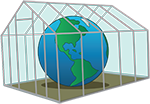LUNES MARTES MIÉRCOLES JUEVES VIERNES SÁBADO DOMINGO
Vasos agua Vasos agua Vasos agua Vasos agua Vasos agua Vasos agua Vasos agua
MEDITERRANEAN DIET: IS FAST FOOD KILLING OFF SPAIN¨'S FAMED MEDITERRANEAN DIET?
The profusion of fast food restaurants
in historical city centers along the Mediterranean – where the most
popular menu item is often a dish of spaghetti swimming in a pool of
industrially produced carbonara sauce – is just one of the signs that a
slow but inexorable change is underway: the end of the Mediterranean
diet.
This dietary change conceals a social
transformation that goes far beyond food. The Mediterranean diet, once a
way of life as much as a way of eating, has morphed into something that
looks more like a medical recommendation than a reflection of social
mores.
A June report by the United Nations Food and Agriculture Organization
(FAO) and the International Centre for Advanced Mediterranean Agronomic
Studies (
CIHEAM)
notes that the region is shifting away from its traditional diet, and
warns that the effects of this shift go beyond nutrition.
“The abandonment of traditional habits
and the emergence of new lifestyles associated with socio-economic
changes pose important threats to the preservation and transmission of
the Mediterranean diet to future generations,” reads the report Mediterranean Food Consumption Patterns.
One of the white paper’s key messages
is that “it is urgent to preserve the cultural heritage of the
Mediterranean diet as an outstanding resource for sustainable
development as it contributes to promoting local production and
consumption, encouraging sustainable agriculture and safeguarding
landscapes.”
A surge in ready-to-eat food
Stall owners at the Antón Martín food market, in downtown Madrid, have already noticed the transformation.
“People don’t cook as much as they used
to, and you can tell that young people buy a lot of ready meals,”
explains Lorenzo, who has spent the last 16 years working at a butcher’s
stall. “We sell a lot more steaks than meat for stews.”
“The Mediterranean diet involves local
fresh produce that is grown nearby, which is why it’s a bit more
expensive and requires more time,” explains Lluìs Serra-Majem, a
nutrition expert who teaches at Las Palmas University and one of the
main sponsors behind the bid that got the Mediterranean diet inscribed
as an Intangible Cultural Heritage of Humanity item by Unesco in 2013.
“It’s not just the crisis that’s
influencing in the decline. The problem is also a lack of knowledge: you
need to know how to cook fish and vegetables, or how to shop for fresh
food... All of this is a very important part of the Mediterranean diet,”
says Serra-Majem, who co-authored the FAO study.
The gradual disappearance of
traditional recipes – visibly happening with pulses, for instance –
consumers who increasingly buy their groceries at supermarkets rather
than traditional markets, and the rise of convenience food in a world
where nobody has the time to cook, all underscore the profound social
transition underway.
“We are living through the
globalization of food,” explains Emilio Martínez Muñoz, a professor of
physiology at Granada University. “These days, we no longer live on
local, seasonal produce, but buy our food off the shelves of large
stores containing a lot of ready-to-eat products. With the crisis,
people were busier eating than wondering about what they were eating,
and we are losing a lot of our food culture.”
Fewer fresh products consumed in 2014
The trend is mostly cultural, making its effects difficult to capture statistically. Yet the Agriculture Ministry’s 2014 report Food Consumption shows a decline in all products associated with the Mediterranean diet.
The study, which closely analyzes
Spaniards’ eating habits, says that “the volume of fresh products that
were consumed fell more (-3.3%) than other food types (-1.7%) even
though the former experienced bigger price drops than the average drop
for all food types.”
Between 2013 and 2014, consumers bought
3.1% fewer potatoes and fresh vegetables, and 6% fewer tomatoes. In the
case of pulses, perhaps the dietary element that is disappearing the
fastest from people’s tables, the drop was 6.1%.
“We observed that fruits and vegetables
are falling behind in Spanish diets, which are increasingly oriented
towards meat and milk products,” reads the report.
Eating habits reflect a society at a
specific historical moment. The pure Mediterranean diet, born in
southern Europe after World War II, represents a society with few
resources where people spent their time out in the field, with no access
to supermarkets, eating what grew out of the earth and leaving its
preparation in the hands of women, who were mostly homemakers.
“It is the historical expression of a
specific time and economic situation,” says Sandro Dernini, an FAO
advisor and coordinator of the Forum on Mediterranean Food Cultures.
“What’s happening right now is not a decline, it’s a much more complex
situation than that.”
“We are not living the way we lived in
the postwar era, we are not a poor country and people have changed the
way they eat,” adds F. Xavier Medina, director of the Unesco Chair of
Food, Culture and Development at Universitat Oberta de Catalunya.
“The food industry is much bigger than
it was a few decades ago. It’s a cultural transformation, it’s not a
crisis but a change. And now we are in the process of analyzing where
our nutrition is headed,” adds Medina, who also contributed to the FAO
report.
A generational change
Ramon Estruch, a doctor who chairs the
Scientific Committee of the Mediterranean Diet Foundation, brings up
another piece of research that confirms the trend.
“In the
PREDIMED
study [Prevention through a Mediterranean Diet], which included 7,447
subjects living in eight different regions, the degree of adherence to
the traditional Mediterranean diet, on a scale of 14 points, was around
8.5,” he says. “Middle-aged and older Spaniards got a C+ or a B-,
depending on how you look at it. But younger people scored much lower.
In other words, we are losing the Mediterranean diet and are not even
aware of it.”
With the crisis, people were busier eating than wondering about what they were eating, and we are losing a lot of food culture”
Emilio Martínez Muñoz, Granada University
“The key to this diet is the fact that
it’s healthy food in a sustainable environment,” explains Ángel Gil, a
professor at Granada University and president of the Ibero-American
Nutrition Foundation. Above all, this diet is not just based on food but
also on exercise.
“For many centuries, our species was
not sedentary. We used to walk from one place to the next. But there’s
been an enormous change: we’ve become sedentary, and that greatly
reduces our energy consumption,” he continues.
Manuel Martínez, technical director at
the European Institute of the Mediterranean Diet, which answers to the
Andalusian government, admits there is “a growing shift away from
Mediterranean diet-oriented consumer habits, and that in turn seems to
be linked to a growing incidence of overweight individuals.”
“In a very broad study we are
conducting on nutrition in Andalusia, we are not just analyzing how much
people stick to the Mediterranean diet, but everything else that it
represents as well, from the change in family structures to what
children are eating, considering that the latter don’t take care to eat
right unless their parents are on top of them,” he continues. “We have a
lot of work ahead of us. We have to launch initiatives to encourage
this diet and the consumption of local produce, but we also need to
foment physical activity, which is included in the Mediterranean
lifestyle. Without one of its parts, the whole does not work.”



























